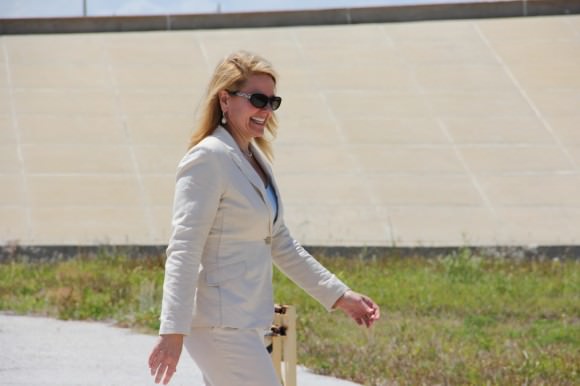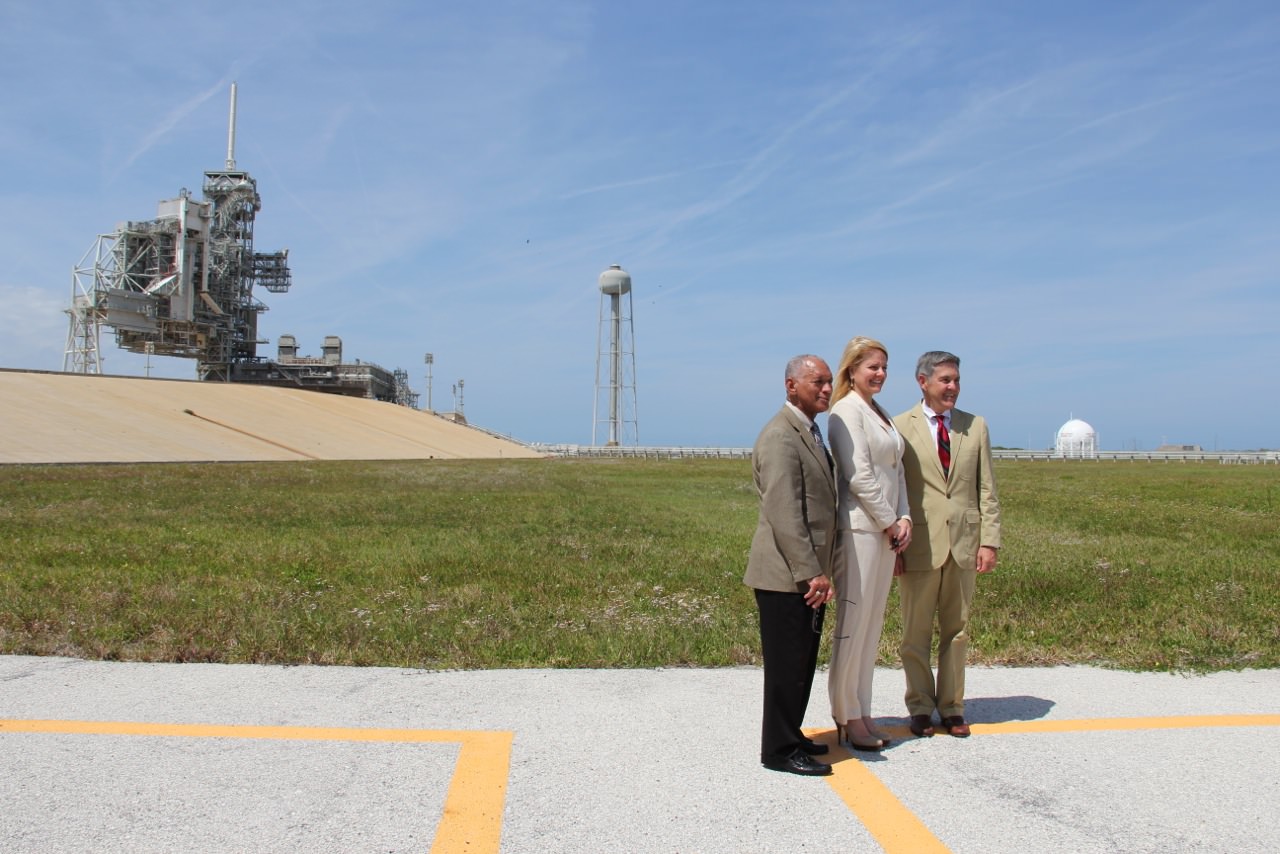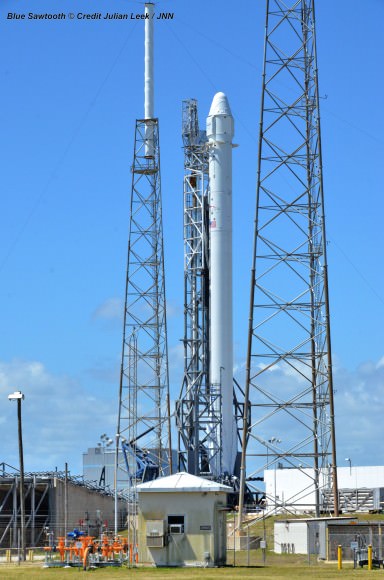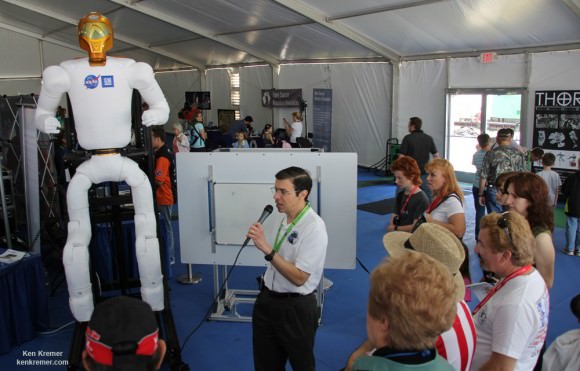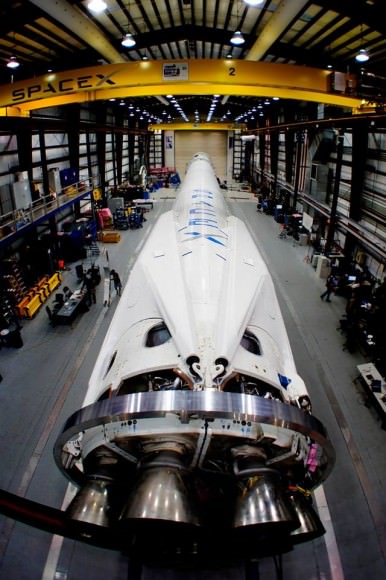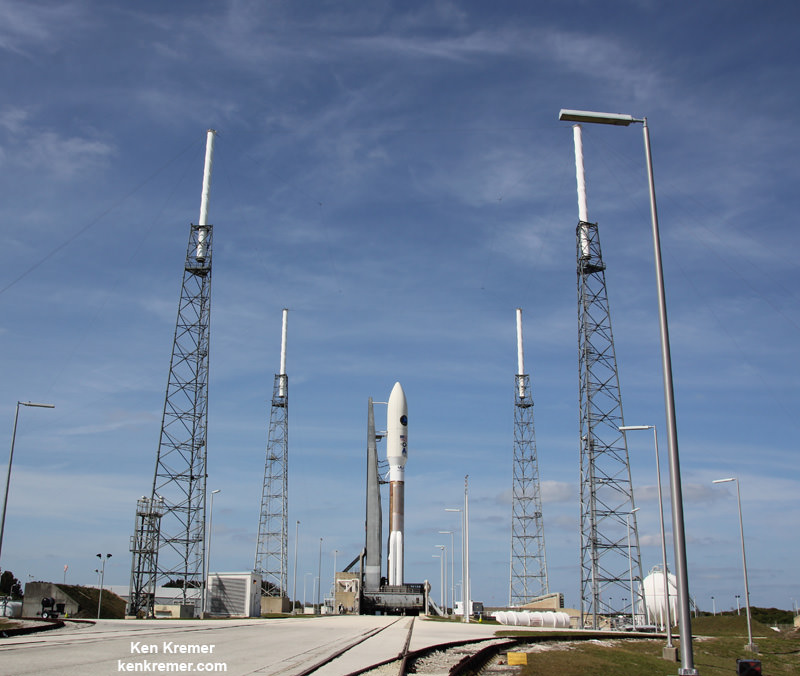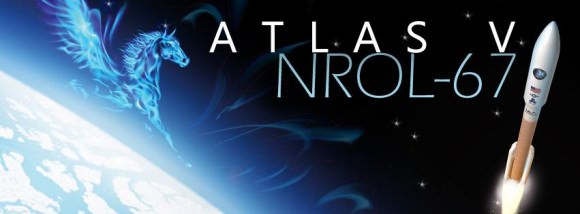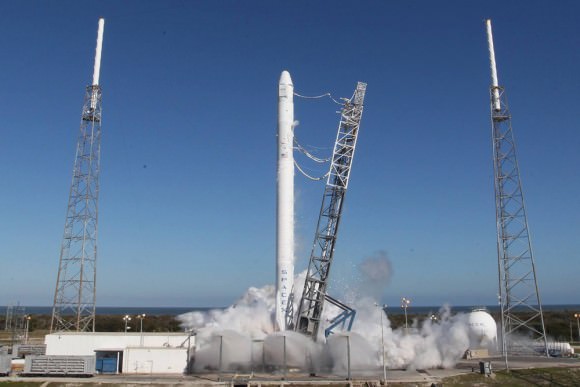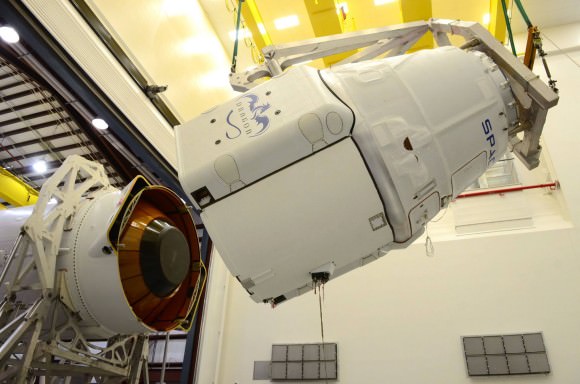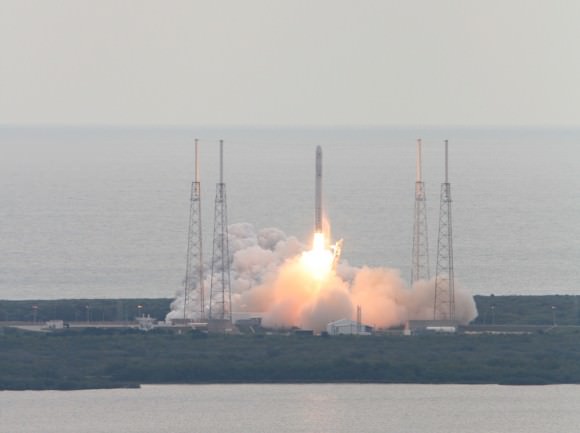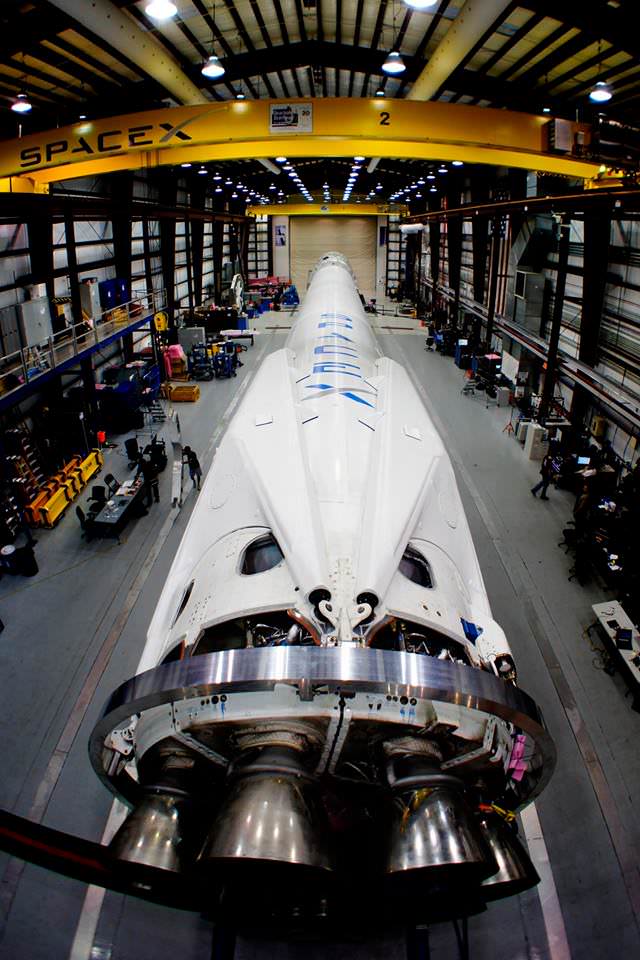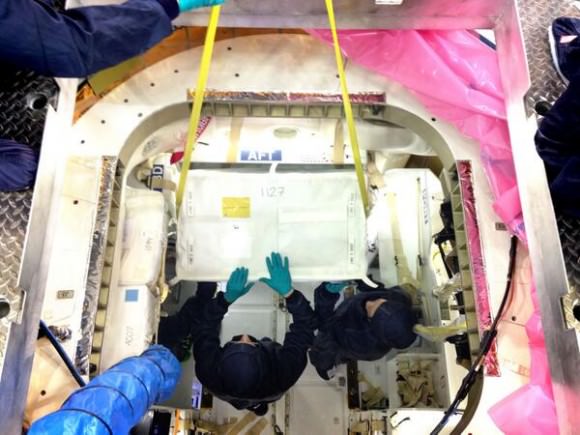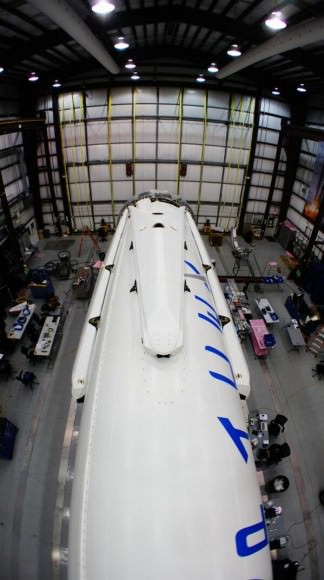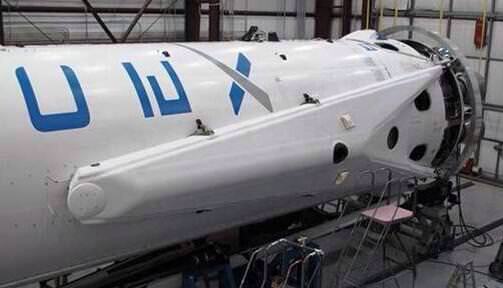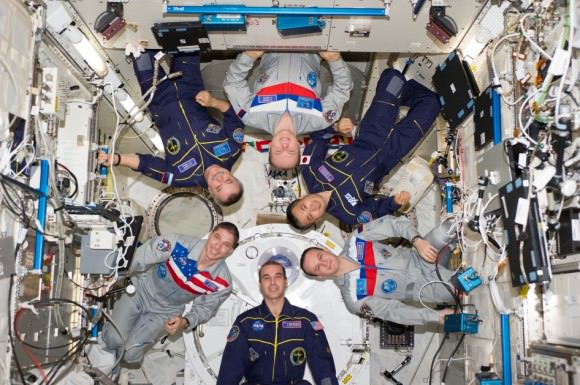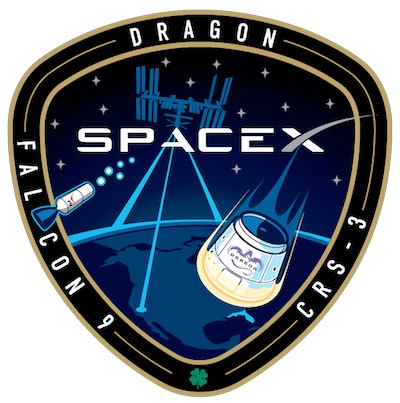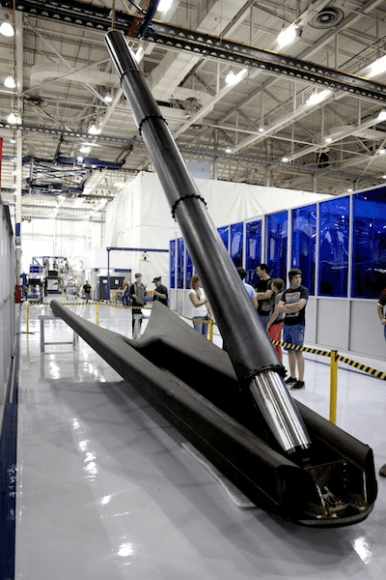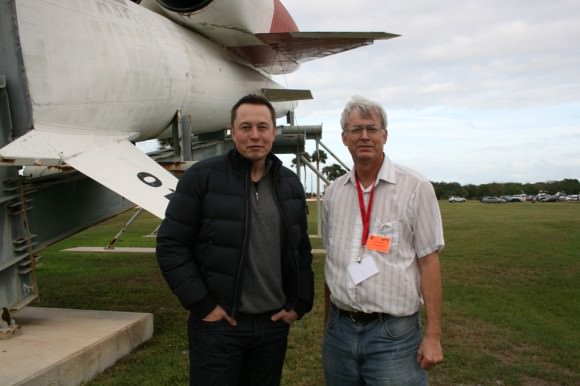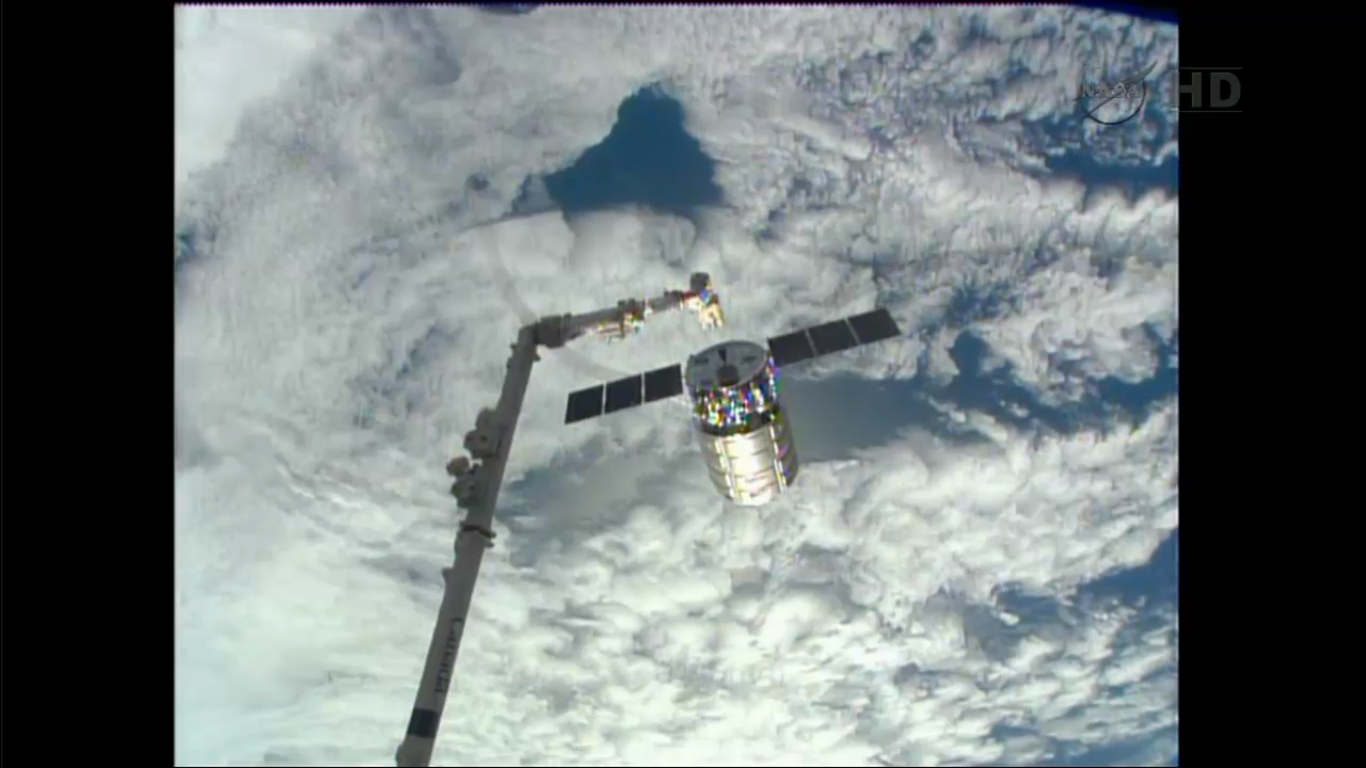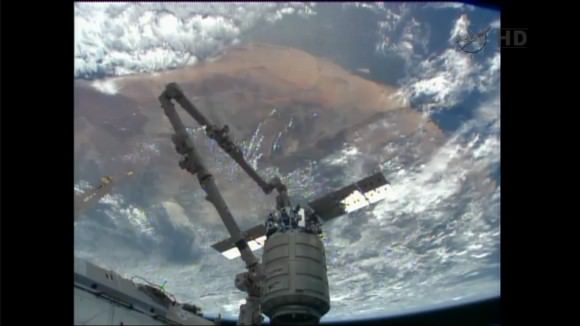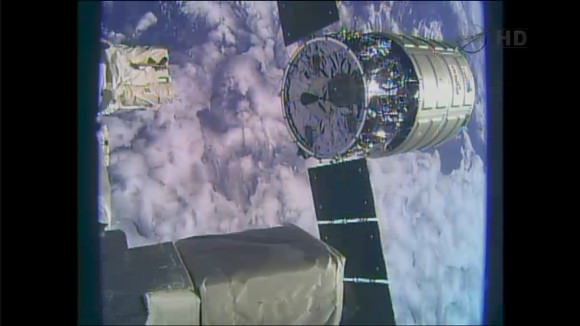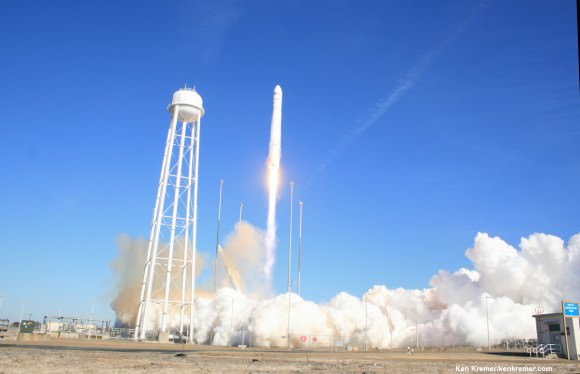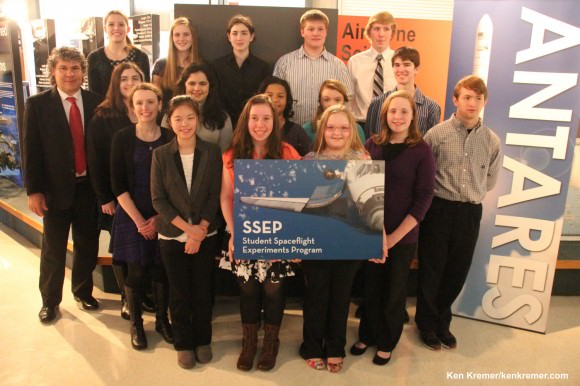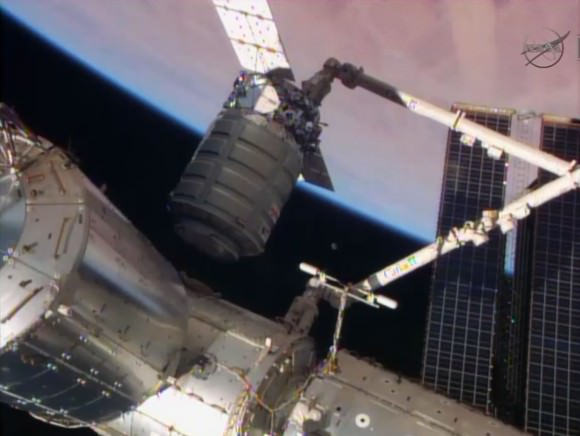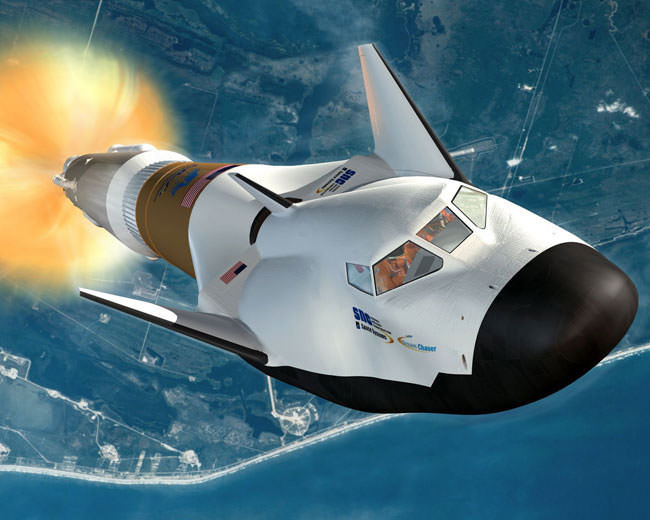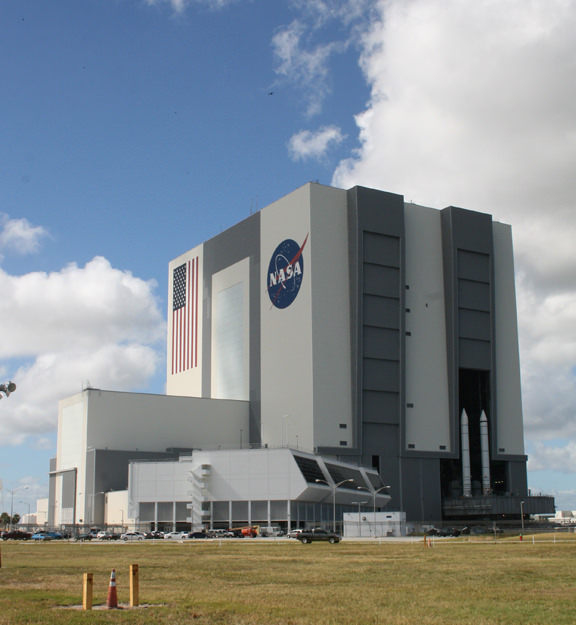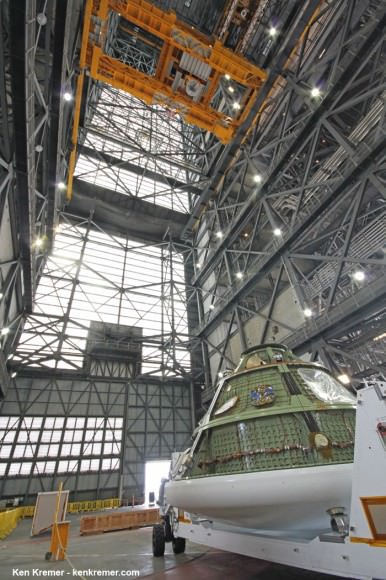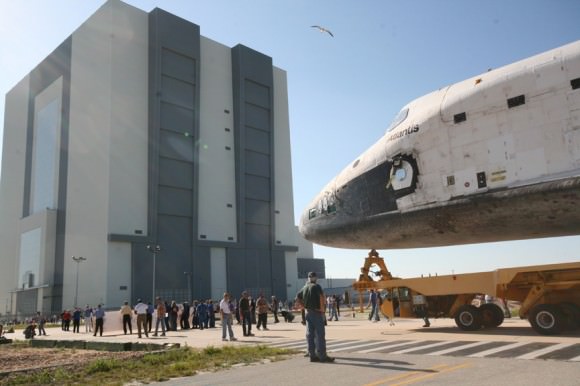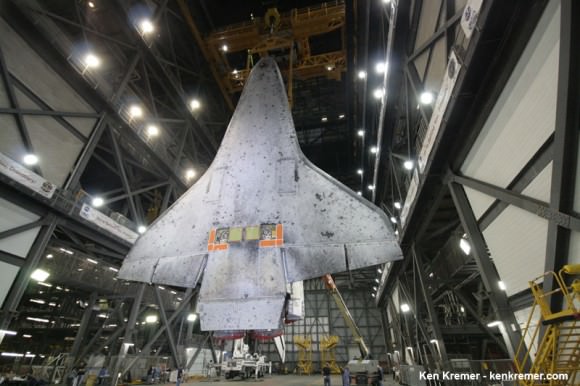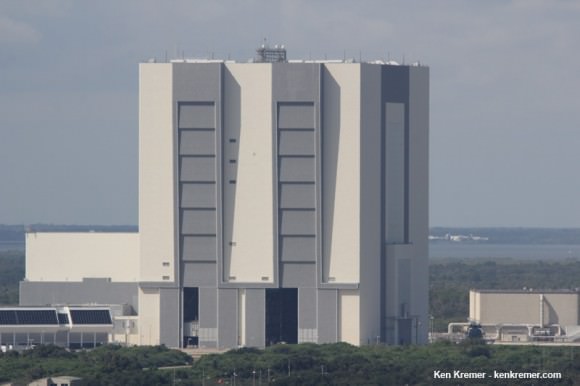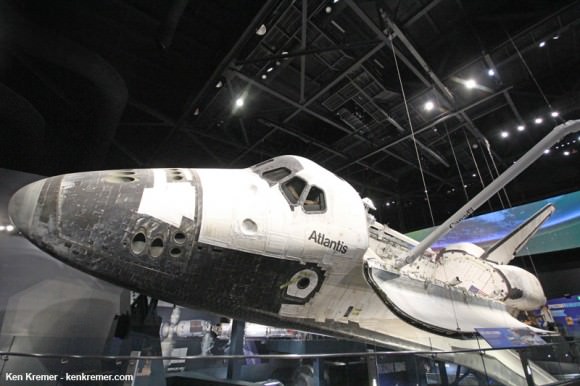The keys to NASA’s historic launch Pad 39A that propelled humanity’s first man to walk on the Moon – Neil Armstrong – during the history making flight of Apollo 11, have been handed over to new owners, namely the private aerospace firm SpaceX for a new purpose – serving as a commercial launch facility.
NASA and Space Exploration Technologies Corporation (SpaceX) of Hawthorne, Calif., have just signed an agreement giving SpaceX rights to occupy and operate seaside Launch Complex 39A at the Kennedy Space Center (KSC) in Florida.
SpaceX was founded by billionaire, entrepreneur and space visionary Elon Musk.
SpaceX aims to give the now dormant pad a new lease on life in the emerging New Space era by revitalizing it as a commercial launch site for the company’s mammoth new Falcon Heavy rocket, currently under development, as well as for manned launches of the firm’s human rated Dragon spacecraft atop the Falcon 9 according to Gwynne Shotwell, president of SpaceX.
“We’ll make great use of this pad, I promise,” Shotwell told reporters at a briefing at the pad.
The liquid fueled Falcon Heavy will be the most powerful rocket in the world according to SpaceX, generating generating nearly four million pounds of liftoff thrust from 27 engines and thus significantly exceeding the power of the Delta IV Heavy manufactured by competitor United Launch Alliance.
Shotwell said renovations to pad 39A would start later this year. The maiden SpaceX launch from the complex is expected next year.
“We will launch the Falcon Heavy from here from this pad early next year,” Shotwell stated.
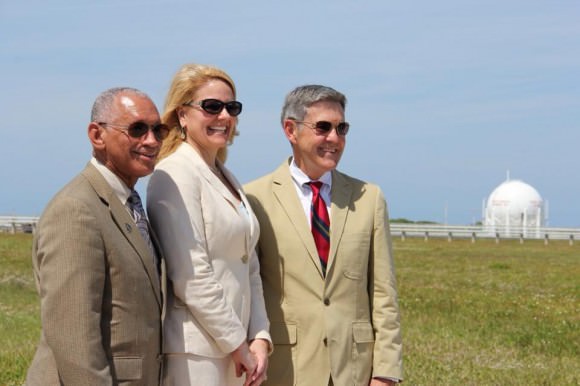
The SpaceX Dragon is one of three commercial crew vehicles being developed under a public-private partnership with NASA to ferry US astronauts to the International Space Station (ISS) and restore America’s human spaceflight capability lost since the shuttle’s retirement.
The Boeing CST-100 and Sierra Nevada Dream Chaser are also vying for the next round of private ‘space taxi’ funding from NASA.
Pad 39A has been inactive and mothballed since the last shuttle mission, STS-135, thundered to space in July 2011.
Not a single rocket has rolled up the ramp at KSC in nearly 3 years.

Credit: Ken Kremer/kenkremer.com
The new lease agreement was signed by NASA and SpaceX officials and announced onsite at Pad 39 at the briefing.
“Today this historic site from which numerous Apollo and space shuttle missions began and from which I first flew and left the planet on STS-61C on Columbia, is beginning a new mission as a commercial launch site,” said NASA Administrator Charles Bolden.
“While SpaceX will use pad 39A at Kennedy, about a mile away on pad 39B, we’re preparing for our deep space missions to an asteroid and eventually Mars. The parallel pads at Kennedy perfectly exemplify NASA’s parallel path for human spaceflight exploration — U.S. commercial companies providing access to low-Earth orbit and NASA deep space exploration missions at the same time.”
Under terms of the new agreement with NASA, the lease with SpaceX spans 20 years.
“It’s exciting that this storied NASA launch pad is opening a new chapter for space exploration and the commercial aerospace industry,” said Bolden.
SpaceX will also maintain and operate Pad 39A at its own expense, with no US federal funding from NASA.
Pad 39A will be SpaceX’s third launch site. The company also launches its Falcon 9 rockets from nearby Pad 40 on Cape Canaveral Air Force Station and a west coast pad on Vandenberg Air Force Base, Calif.
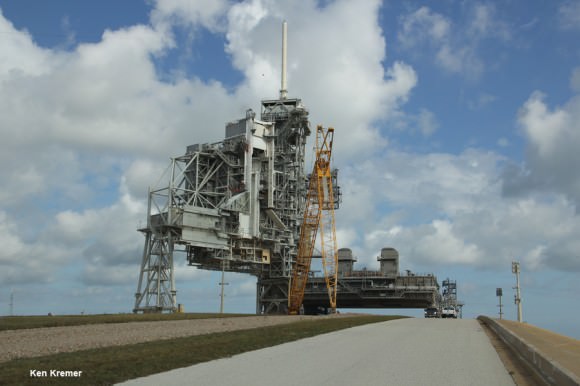
The next Falcon 9 liftoff with an unmanned Dragon cargo freighter is currently slated from Friday, April 18 following Monday’s scrub.
NASA determined that the agency no longer has a use for pad 39A since the end of the shuttle era and has been looking for a new tenant to take over responsibility and pay for maintenance of the launch complex. The agency awarded the lease to SpaceX in December 2013.
Instead, NASA decided to completely upgrade, renovate and modernize Pad 39As twin, namely Launch Pad 39B, and invested in converting it into a 21st Century launch complex.
NASA will use Pad 39B to launch the state of the art Orion crew vehicle atop the new Space Launch System (SLS) booster for voyages beyond Earth and taking humans back to the vicinity of the Moon and further out on deep space missions to Asteroids, Mars and beyond.
The first unmanned SLS test flight from Pad 39B is slated for late 2017.
Pad 39A was an active NASA launch pad for nearly 35 years starting back near the dawn of the Space Age in the 1960s.
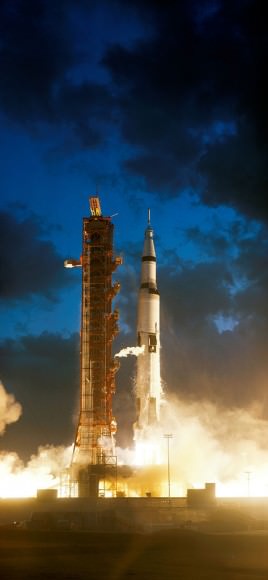
Apollo 4 was the first NASA booster to blast off from Pad 39A on Nov. 9, 1967 during the historic inaugural test flight of the Saturn V moon rocket that eventually served to dispatch all six US manned lunar landing missions.
The closing NASA use of Pad 39A took place on July 8, 2011 with the launch of STS-135 and orbiter Atlantis on the final flight of the space shuttle era.
The four person STS-135 crew delivered the last US pressurized module to the massive low-Earth orbiting ISS.
No Americans have launched to space from American soil since STS-135.
Launch Complex 39 was originally constructed to launch the Apollo moon landing missions atop NASA’s Saturn V booster in the 1960s and 1970s. Both pads were later modified to support the Space Shuttle program whose first launch took place in 1981 from pad 39A.
“Kennedy Space Center is excited to welcome SpaceX to our growing list of partners,” Center Director Bob Cabana said. “As we continue to reconfigure and repurpose these tremendous facilities, it is gratifying to see our plan for a multi-user spaceport shared by government and commercial partners coming to fruition.”
Stay tuned here for Ken’s continuing SpaceX, Orbital Sciences, commercial space, Orion, Chang’e-3, LADEE, Mars rover, MAVEN, MOM and more planetary and human spaceflight news.
